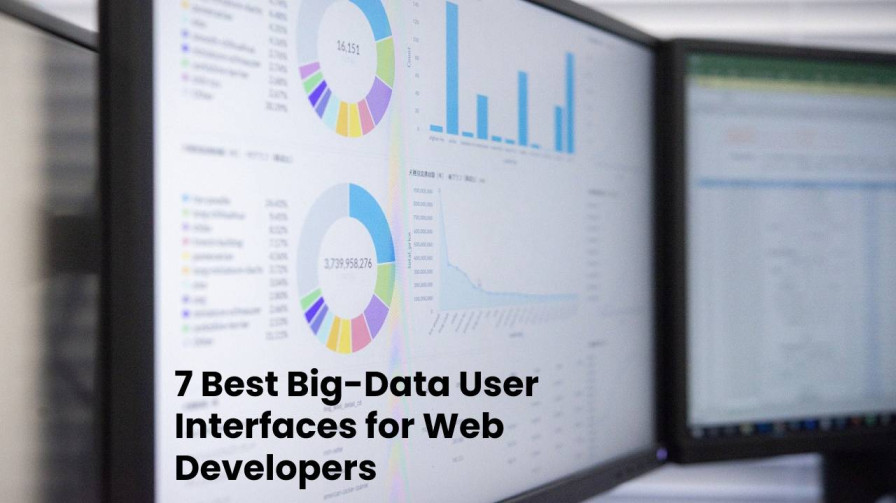Web applications have become much more sophisticated than their predecessors.
Gone are the days when all websites were static pages displaying long paragraphs of text and columns of data in a boring format.
Instead, modern websites present content dynamically through a JavaScript web framework and can process enormous data sets at the back end to display interactively.
But, of course, such staggering progress wouldn’t have been possible without advances in web development.
You can now build robust web applications for all the data processing and visualization needs a user could have.
Moreover, such functionalities don’t require developers to spend days and nights bringing them to life. Instead, you can use powerful frameworks that do everything for you in a matter of seconds. Furthermore, you can define these frameworks in a few lines of code.
The makers of modern JavaScript web frameworks instill robust capabilities, and the emphasis is also on creating a practical implementation with a developer-friendly interface.
This is especially true in the case of frameworks like Sencha Ext JS that ensure all methods are optimized and available for immediate use to build powerful, data-intensive web applications.
This article takes some of the most prominent JavaScript web frameworks that can help you build solid web applications and enable you to wrangle and masterfully present data on these applications.
Table of Contents
Why Do You Need to Build the Right Big-Data User Interface?

If you are a web developer, you know that enterprises have become very data intensive. Even the most straightforward products gather crucial data, fine-tune it, and improve it.
Additionally, many products now contain advanced analytical functions that visualize the data and its trends for the user.
Such advancements have required developers like you to learn how to integrate powerful data wrangling in your development.
The makings of a successful data-intensive web application depend on many factors, mainly a robust back-end implementation and an intelligent user interface. The lack of these attributes will make your web application feel unsatisfactory.
The worst case would be that your web application either wouldn’t deliver on promised functionalities or hinder the user experience. Therefore, you should also choose the proper JavaScript web framework for UI.
What’s Your Approach for Your Big-Data User Interface?

When beginning to design the user interface for a web application, your first instinct could require alternative methods. Not all web applications are data-intensive on the same level and require different approaches.
However, the methodology is similar to developing any other user interface. The only thing is that you would now focus on smartly visualizing and communicating the data.
Some of the main steps of the design workflow include answering questions and carrying out tasks like those below:
- Effectively define the problem.
- Validate product requirements.
- Rapidly develop prototypes to understand the data better.
- Let your comprehension of the data inform your design methodology.
- Select suitable visualization methods based on the nature of data, how frequently it is visualized, and appropriate dimensions of the visualizations.
- Improve the design methodology in the first few iterations after receiving user feedback.
The above tasks paint a picture of the user interface and user experience development process for data-intensive web applications.
Once you are clear about your approach, you can move on and choose your preferred development framework. For example, you could opt for Sencha Ext JS, which is based on a modular component-based approach and enables you to focus on one feature at a time.
Exploring the Frameworks that Help Build the Best Big-Data User Interface

1. Sencha Ext JS
It is an industry-leading JavaScript web framework dedicated to efficiently handling your data and the myriad tasks you want to accomplish.
Sencha Ext JS is based on JavaScript and offers an extensive library of UI components well suited for every unique kind of data visualization or processing need. In addition, it can take data from any back-end source, and it offers features like aggregation, sorting, and filtering on any modern smart device.
Its modular approach facilitates planning your web application as a group of components and tools working together. Apart from its data-focused abilities, Sencha Ext JS allows you to extend functionalities by integrating extensions developed by a dedicated user community.
You can also combine it with sister products like Sencha Test and utilize its robust end-to-end testing capabilities to test your web application.
2. React
React is one of the most popular front-end development JavaScript web frameworks. It is a favorite among developers for its modular nature, and each component is further driven by its state that holds all the data.
The front-end re-renders as the data changes to display an updated form. The most recent updates enable you to write HTML and JavaScript code together (JSX) to better define your front end and use Hooks functions for more concise code.
Working with big data in React-based applications requires considerable skill with JavaScript and its asynchronous nature.
Furthermore, you would need to get comfortable with JSX. And since most big-data dashboards are primarily dynamic, you need to write code that efficiently handles state changes for a seamless user experience. However, React offers extensive documentation, and its popularity ensures that you will get all kinds of help.
3. Vue.JS
Vue.JS is a recently released front-end development framework for building interactive user interfaces for your web application.
It is a JavaScript web framework similar to React in its component-based modular nature and reactive rendering capabilities. You should look into Vue to utilize a lightweight and more flexible framework that includes many other improvements. Vue also contains one-way data binding.
Vue has many data visualization libraries to help you make elegant charts and dashboards. In addition, being younger than its competitors means it improves on many of its shortcomings. However, it is slowly gaining acceptance within the developer community, and you may not get help for any problems you encounter.
Regardless, many professionals suggest Vue as a viable option for building a data-intensive front end.
4. Angular
Angular is the second JavaScript web framework globally dominating the front-end development landscape. It has gone through many iterations, including a significant overhaul recently, to ensure that the applications it brings to life are speedy, smooth, and scalable.
Development with Angular involves working with templates that you can extend by adding your components. Alternatively, you could create the components from scratch to better control the codebase.
You can create data models within Angular to manage your big-data needs, and its easily testable nature will ensure that your web application doesn’t fail as it works with the data. Additionally, Angular applications are lightweight, so your data-intensive web application will be portable as well.
However, Angular has a famously difficult learning curve that takes some time to get over, so your development can’t begin immediately with this JavaScript web framework.
5. Django
While most of the frameworks in this list are JavaScript web frameworks (one of the fundamental languages of the web), Django stands out as it’s based on the popular Python.
The fact that Python is the most preferred language when it comes to big-data development and processing means your Django web application can utilize big-data libraries on the back end. However, Django enables you to create data models and directly interact with databases to store and maintain your data.
You can build a smooth front end with Django that utilizes Python’s powerful data visualization libraries like matplotlib or plotly. Django also has built-in optimized methods to handle efficiently and process large data sets.
However, the lack of development conventions and a monolithic nature has made its adoption a niche among the web developer community.
6. Bootstrap
Bootstrap is another front-end JavaScript web framework utilizing prebuilt templates and focusing on a responsive design methodology.
It aims to be a mobile-first framework that enables you to build user interfaces that mobile smart devices can handle. It’s popular in the mobile development industry for its offered ease of development and design templates that you can use to start developing immediately.
You can build powerful analytics panels and visualization dashboards using Bootstrap, ensuring that they are mobile-ready. Additionally, your web applications can have responsive animations that add to their overall aesthetic.
However, Bootstrap is a visually driven front-end framework and may not be adequate for handling large data sets. Your back end will have to do all the heavy lifting, and then you can display the result on the Bootstrap interface.
7. Svelte
Taking a different approach than fellow front-end development JavaScript web frameworks, Svelte generates the JavaScript for your web interfaces during compiling instead of doing its work in the browser.
As a result, the generated code is optimized for a seamless experience. Svelte also has a learning curve that’s easier to conquer. In the end, the final application developed with Svelte is smaller in size yet efficient and reactive.
Svelte has also added TypeScript support in recent updates, and it’s growing steadily. However, it is still relatively young and doesn’t enjoy the same support from a dedicated user community like other older frameworks.
However, you can use Svelte to make visualizations and big-data dashboards while also ensuring a lightweight and portable web application.

